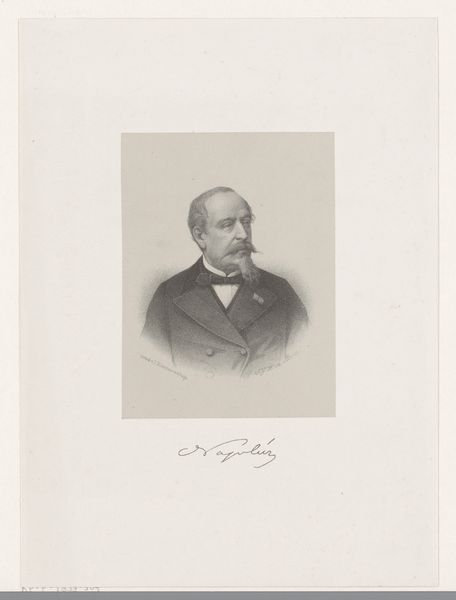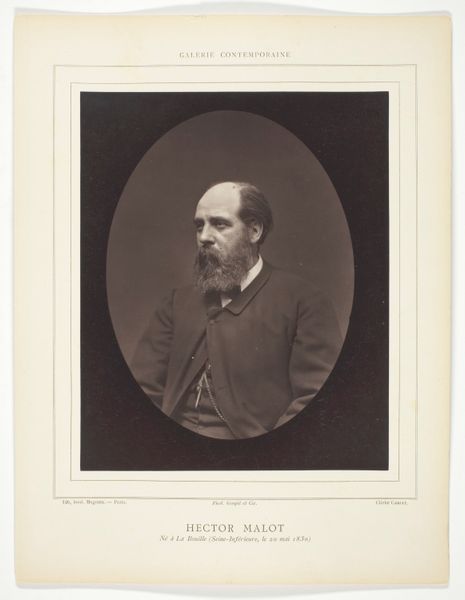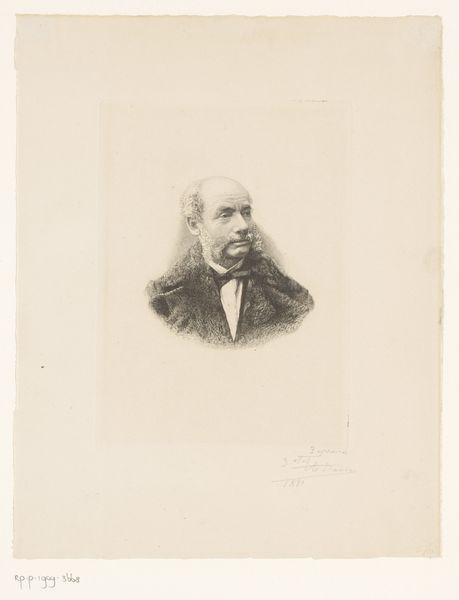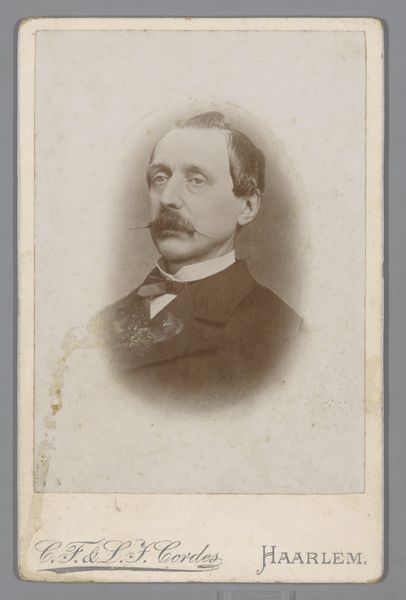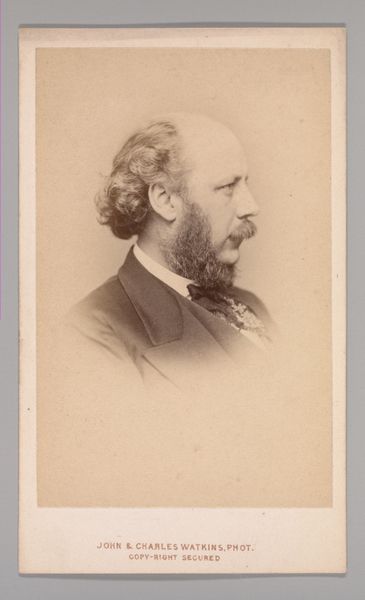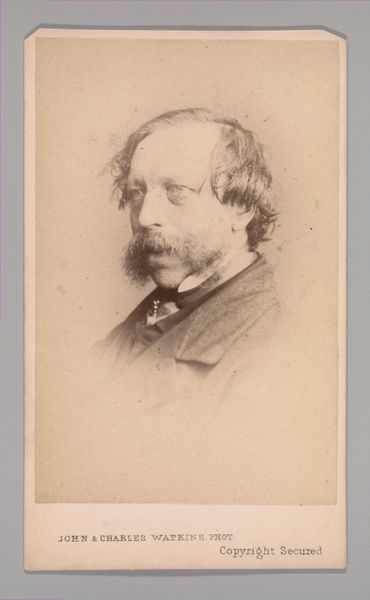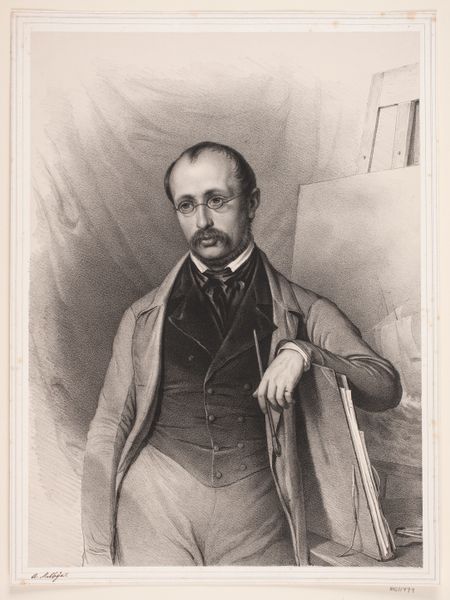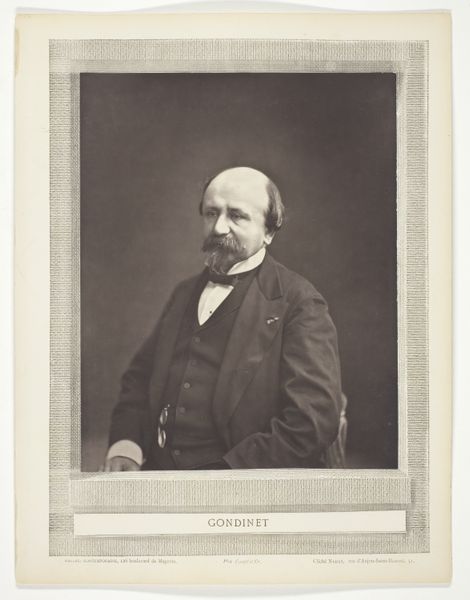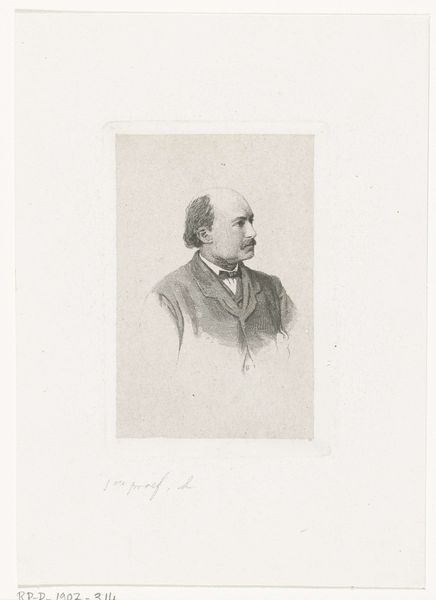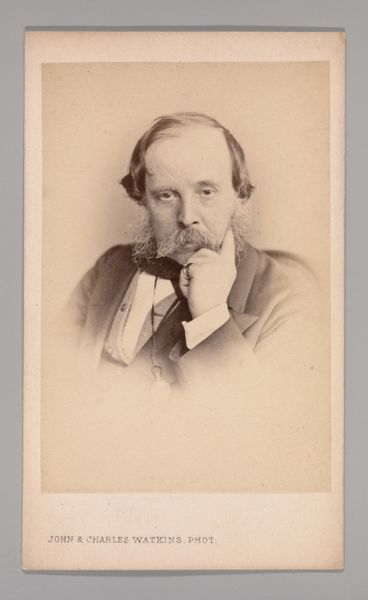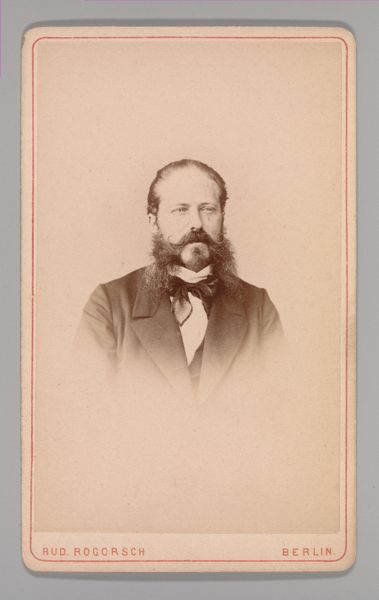
drawing, pencil, graphite
#
portrait
#
drawing
#
pencil drawing
#
pencil
#
graphite
#
realism
Dimensions: height 158 mm, width 110 mm
Copyright: Rijks Museum: Open Domain
Curator: This is "Portret van Joseph Wolff," a drawing crafted in 1878, now held here at the Rijksmuseum. The artist, Paul Barfus, rendered the portrait using graphite and pencil on paper. What's your immediate sense of this piece? Editor: There's a contemplative gravity to his expression, isn’t there? A hint of melancholy in the set of his jaw and the way he avoids direct eye contact. It speaks to a certain… reserved intensity. Curator: Precisely. Understanding the portrait demands looking at the socio-political context in which it was created. During the late 19th century, portraiture served as a statement of bourgeois identity. Here, Wolff is meticulously rendered; note the crisp details of his suit, the texture of his hair. How do those details reinforce a particular social standing? Editor: Absolutely. Clothing has always served as a visible marker of identity and social class, but also, look at his name inscribed prominently at the bottom, almost like a symbol or personal brand. And I would note that the meticulous shading gives him a kind of timeless, enduring quality, as if he is destined to remain on display and therefore in memory. Curator: An insightful observation about enduring quality! Consider also the absence of color. It lends itself to serious representation. This stylistic choice encourages deeper considerations beyond mere surface appearances, suggesting complexities beneath Wolff’s composed facade. We should consider what isn’t being said about Wolff. Who he might be in connection to what systems of power? Editor: It's like an exercise in semiotics. Everything points beyond itself. His slight frown… Is it doubt? Unease? Discomfort in a society undergoing transformation? Also his mustache—is that supposed to project strength and wisdom? All those minute graphic markings create a subtle complexity. Curator: A beautiful layering of questions to enrich the visitor's engagement. What I take away is the portrait's capacity to stimulate reflections beyond just the aesthetic or biographical. How social norms and hidden histories influence identities on view is what continues to resonate for me. Editor: Yes, seeing it now through both a lens of its time and ours gives the drawing an interesting depth, it makes Wolff's legacy, captured here, ever so alive.
Comments
No comments
Be the first to comment and join the conversation on the ultimate creative platform.
